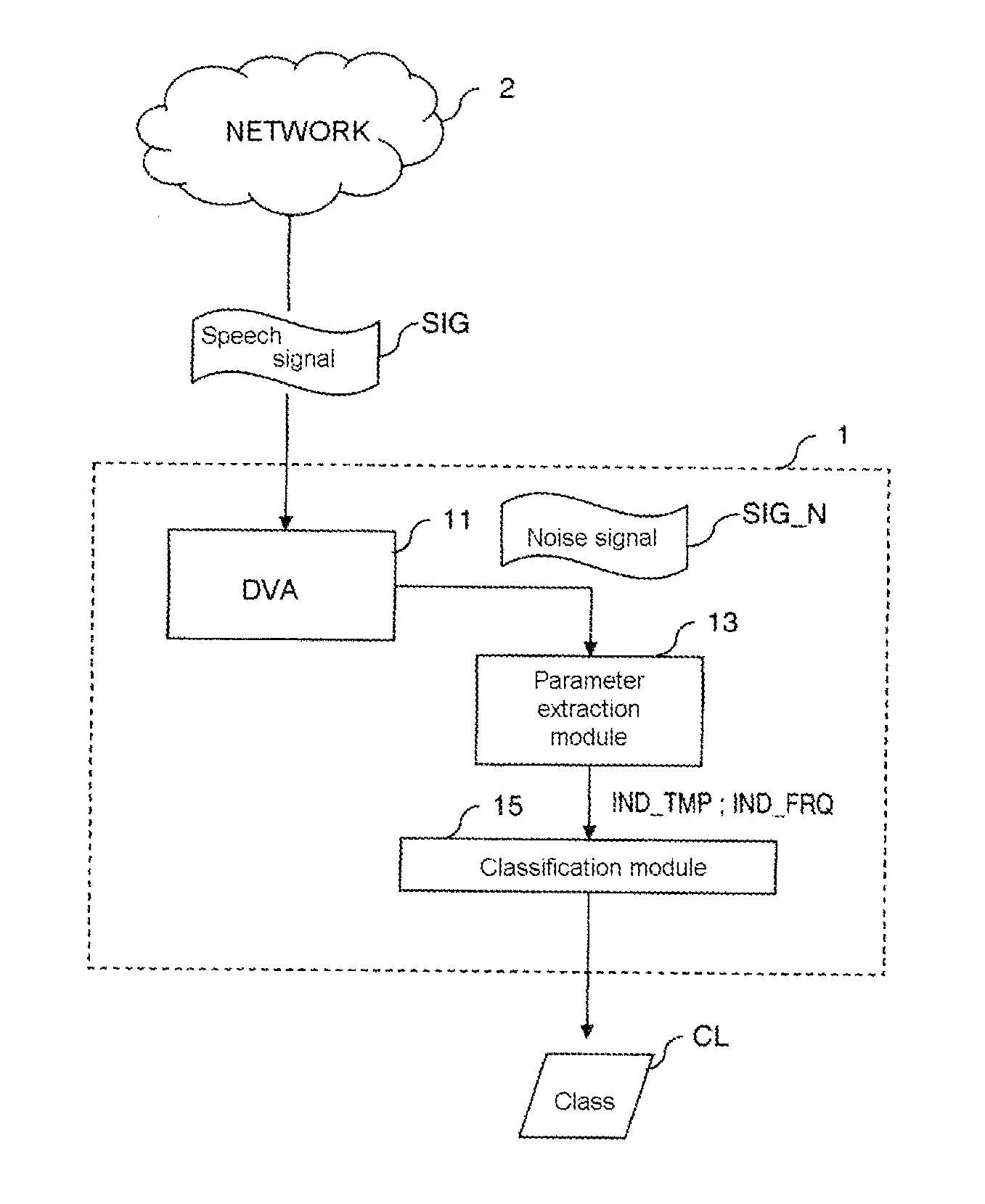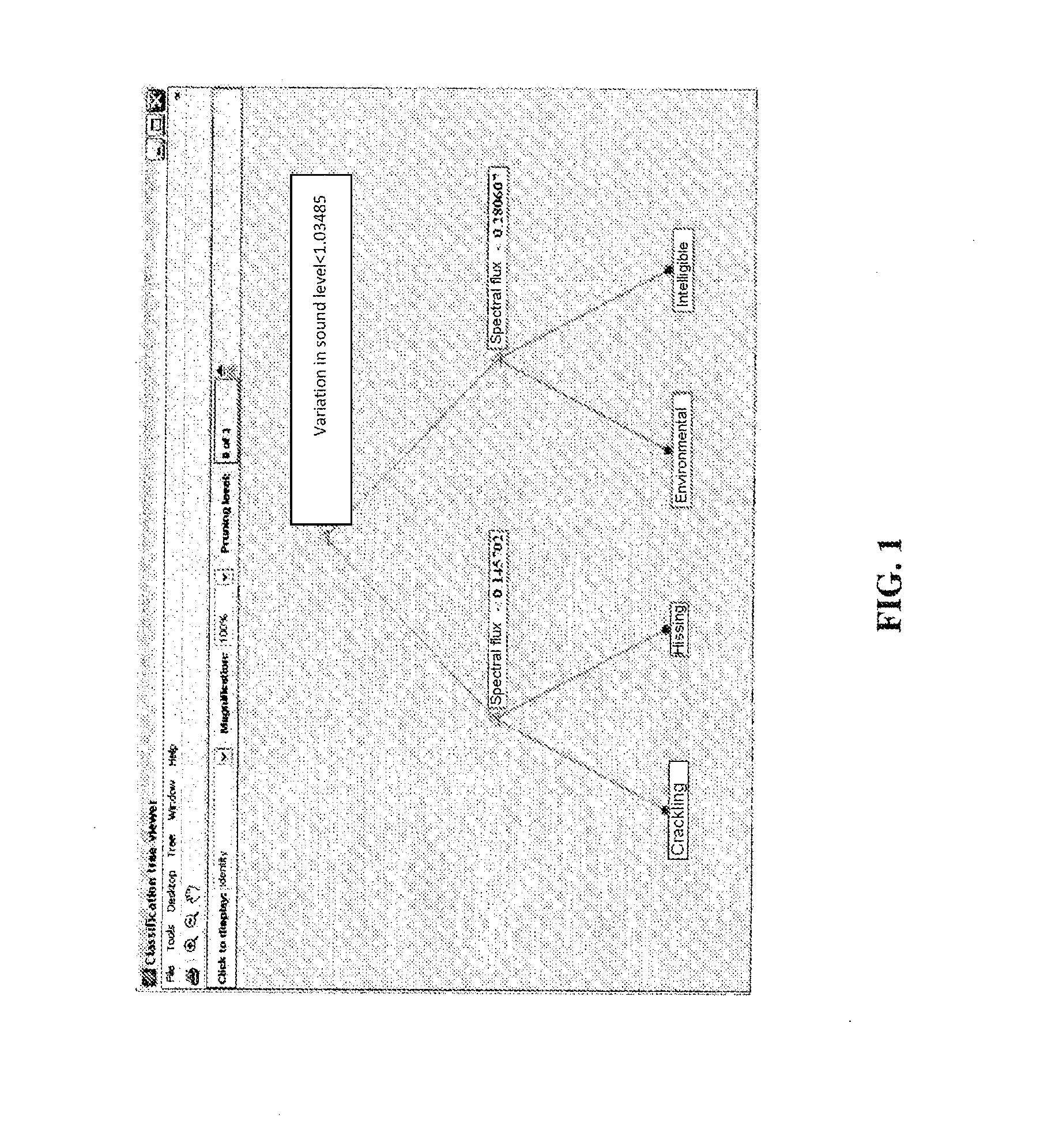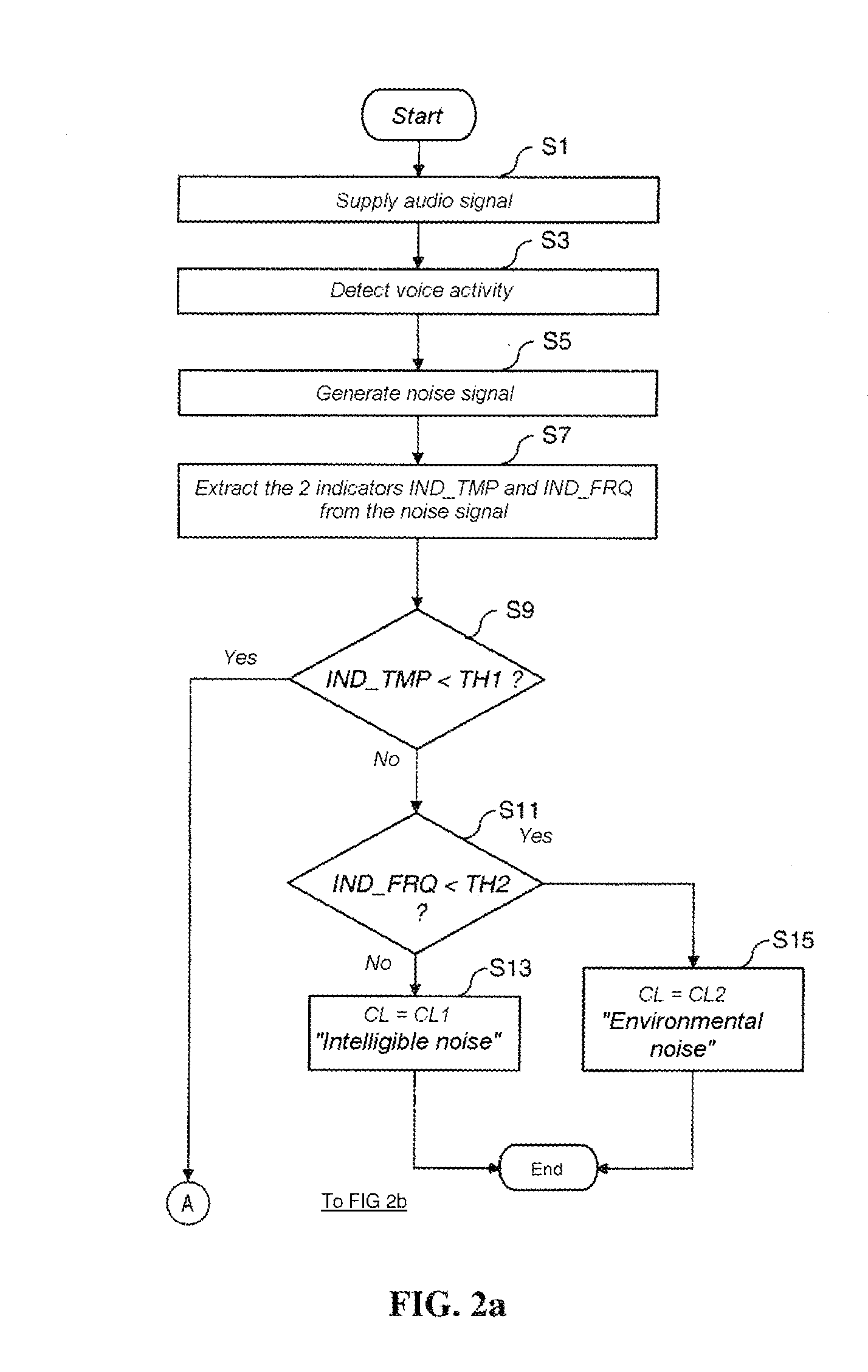Method and device for classifying background noise contained in an audio signal
a background noise and audio signal technology, applied in the field of audio signal processing, can solve the problems of disruptive noise in an audio signal, high processing cost of the above method, and inability to interact with background noise, and achieve the effect of not very costly in processing resources and simple application
- Summary
- Abstract
- Description
- Claims
- Application Information
AI Technical Summary
Benefits of technology
Problems solved by technology
Method used
Image
Examples
Embodiment Construction
[0042]An embodiment of the invention proposes a method and a device for classifying the background noise contained in an audio signal. This method and this device are based on the application of a background noise classification model constructed in advance and on which the method of construction according to an embodiment of the invention is described below.
[0043]1) Construction of the Model for Classifying Background Noises
[0044]The construction of a model for classifying noise takes place conventionally according to three successive phases. The first phase consists in determining a sound base consisting of audio signals containing various background noises, each audio signal being labeled as belonging to a given class of noise. Then, during a second phase, a certain number of predefined characteristic parameters (here termed “indicators”) forming a set of indicators are extracted from each sound sample of the base. Finally, during the third phase, called the learning phase, the s...
PUM
 Login to View More
Login to View More Abstract
Description
Claims
Application Information
 Login to View More
Login to View More - R&D
- Intellectual Property
- Life Sciences
- Materials
- Tech Scout
- Unparalleled Data Quality
- Higher Quality Content
- 60% Fewer Hallucinations
Browse by: Latest US Patents, China's latest patents, Technical Efficacy Thesaurus, Application Domain, Technology Topic, Popular Technical Reports.
© 2025 PatSnap. All rights reserved.Legal|Privacy policy|Modern Slavery Act Transparency Statement|Sitemap|About US| Contact US: help@patsnap.com



